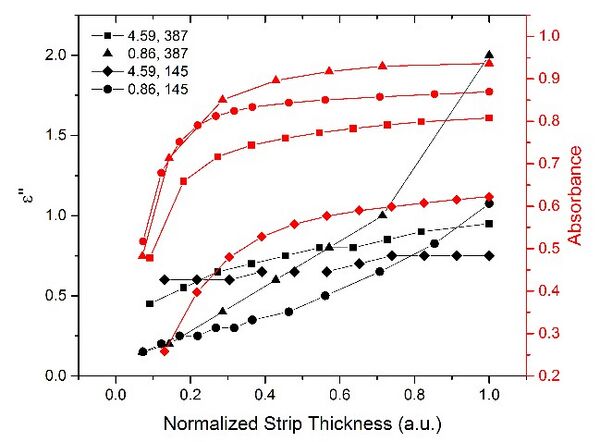J.M.Pearce (talk | contribs) m (→Keywords) |
J.M.Pearce (talk | contribs) m (→See Also) |
||
| Line 20: | Line 20: | ||
*[[Optical modelling of thin film microstructures literature review]] | *[[Optical modelling of thin film microstructures literature review]] | ||
*[[Multi-resonant silver nano-disk patterned thin film hydrogenated amorphous silicon solar cells for Staebler-Wronski effect compensation]] | *[[Multi-resonant silver nano-disk patterned thin film hydrogenated amorphous silicon solar cells for Staebler-Wronski effect compensation]] | ||
[[Category:MOST completed projects and publications]] | [[Category:MOST completed projects and publications]] | ||
Revision as of 12:13, 5 September 2015

Source
- Wyatt Adams, Ankit Vora, Jephias Gwamuri, Joshua M. Pearce, Durdu Ö. Guney. Controlling optical absorption in metamaterial absorbers for plasmonic solar cells. Proc. SPIE 9546, Active Photonic Materials VII, 95461M (August 31, 2015); doi:10.1117/12.2190396. [open access]
Abstract
Metals in the plasmonic metamaterial absorbers for photovoltaics constitute undesired resistive heating. However, tailoring the geometric skin depth of metals can minimize resistive losses while maximizing the optical absorbance in the active semiconductors of the photovoltaic device. Considering experimental permittivity data for InxGa1-xN, absorbance in the semiconductor layers of the photovoltaic device can reach above 90%. The results here also provides guidance to compare the performance of different semiconductor materials. This skin depth engineering approach can also be applied to other optoelectronic devices, where optimizing the device performance demands minimizing resistive losses and power consumption, such as photodetectors, laser diodes, and light emitting diodes.
Keywords
Absorption ; Metamaterials ; Solar cells ; Semiconductors ; Skin ; Absorbance ; Metals ; Engineering ; Light emitting diodes ; Optoelectronic devices
See Also
- Advances in plasmonic light trapping in thin-film solar photovoltaic devices
- Plasmonic Perfect Meta-Absobers for a-Si PV Devices
- Limitations of ultra-thin transparent conducting oxides for integration into plasmonic-enhanced thin-film solar photovoltaic devices
- Optical modelling of thin film microstructures literature review
- Multi-resonant silver nano-disk patterned thin film hydrogenated amorphous silicon solar cells for Staebler-Wronski effect compensation





